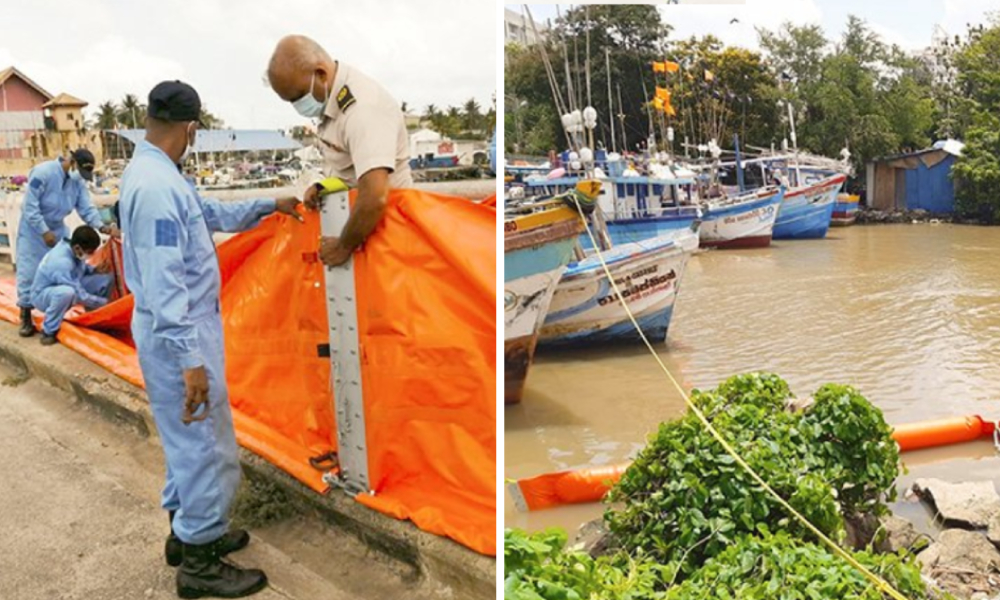
Image Credits: Twitter
Sri Lanka: Cancerous Microplastics From Burning Ship Results In 'Worst Beach Pollution'
Writer: Ankita Singh
A literature lover who likes delving deeper into a wide range of societal issues and expresses her opinions about the same. Keeps looking for best-read recommendations while enjoying her coffee and tea.
Others/World, 31 May 2021 5:42 PM GMT | Updated 31 May 2021 6:05 PM GMT
Editor : Al Arafat Sherfuddeen |
Passionate writer about current events, politics and happenings nationally and globally. An agent of communal harmony and an ardent Arsenal fan.
Creatives : Ankita Singh
A literature lover who likes delving deeper into a wide range of societal issues and expresses her opinions about the same. Keeps looking for best-read recommendations while enjoying her coffee and tea.
"This is probably the worst beach pollution in our history," MEPA chairman Dharshani Lahandapura said. The small polyethene pellets jeopardize tourism beaches and shallow-water fish spawning.
Sri Lanka is confronting an unforeseen appalling pollution disaster as waves of plastic debris from a burning cargo ship strike the shoreline, threatening to damage the local ecology, a senior environment official cautioned on Saturday. Thousands of naval ratings gathered tonnes of microscopic plastic granules off the Singapore-registered MV X-Press Pearl that had been fuming in the horizon for ten days on the beaches by utilizing mechanized diggers. According to Sri Lanka's Marine Protection Authority (MEPA), microplastic contamination may bring years of ecological damage to the Indian Ocean island.
"This is probably the worst beach pollution in our history," MEPA chairman Dharshani Lahandapura said. The small polyethene pellets jeopardize tourism beaches and shallow-water fish spawning. Albeit a multinational firefighting operation, fishing has been prohibited along an 80-kilometre (50-mile) stretch of the shore near the ship that has been flaring up for ten days.
Dangerous Microplastics Causing Mayhem
Microplastics are extremely small pieces of plastic debris in the environment resulting from the disposal and breakdown of consumer products and industrial waste. They are carcinogenic and exposure or consumption of small amounts of them can cause serious health illness. Manjula Dulanjala claimed his staff cleared the beach almost completely on Friday evening but were astonished to see it covered again the next morning.
"This is like the coronavirus. No end in sight. We removed all the plastic yesterday, only to see more of it dumped by the waves overnight," he said Trucks picked up the pellets and garbage, which were packaged into green and white polythene sacks. Microplastics and scorched debris were 60 centimeters (two feet) deep on certain areas of the beach, according to an officer heading another crew. Peter Fernando, a 68-year-old local fisherman, stated he had never seen devastation like it.
The Asian tsunami of December 2004 wreaked havoc on much of the island's coastline, killing an estimated 31,000 people but only causing damage to coastal infrastructure. Sujeewa Athukorale, a Roman Catholic priest, claimed the majority of his parishioners were fishermen who were on the verge of going hungry. "Their immediate need is to be allowed to go back to the sea," he said. The likelihood of damage would be increased if the vessel, which is carrying 278 tonnes of bunker oil and 50 tonnes of gas oil. The fire looked to have burned much of the ship's cargo, including 25 tonnes of nitric acid, sodium hydroxide, lubricants, and other chemicals, according to officials. The X-Press Pearl caught fire while waiting to enter Colombo harbor and is now moored just outside the entrance.
Efforts are on by the Srilankan Government to bring to task the owners of the vessel, an investigation by the Srilankan police is underway to ascertain the reasons for the accident, the damage it has caused and the impact it has had on lives and livelihoods of people.
Also Read: Smokers At 50% Higher Risk Of Developing Severe Illness, Death Due To COVID: WHO
 All section
All section














